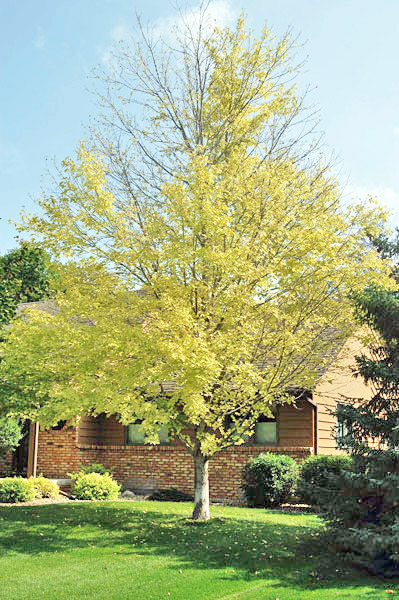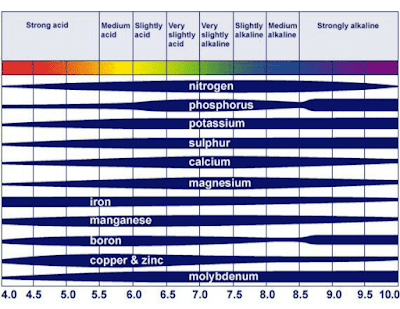Talking Plants
Jillian Patrie | University of Minnesota Yard and Garden Extension
Summer is in full swing and along with the beautiful weather also comes a host of plant health issues. Yellowing leaves can be the result of several plant problems, but in the Red River Valley they can be a symptom of Iron Chlorosis. You may have seen this while out and about in the FM area, especially if there are silver or autumn blaze maples around. Iron Chlorosis can affect other plants too including apple, crabapple, birch and spirea. Let’s look at what causes Iron Chlorosis and how to manage this issue.
Iron Chlorosis is caused by an iron deficiency but does not necessarily mean there is no iron available in the soil. Iron and many other essential plant nutrients are more available to plants depending on several factors, but the two most influential ones are soil pH and soil type. It just so happens that Iron becomes less available in soil with higher pH (7.5+) as well as soils that are compact or drain slowly. FM area soils range in pH between 7-8.5 and are generally made of clay.
How can we determine if trees and shrubs have Iron Chlorosis? First identify the plant species, if the plant in question is a silver or red maple (Autumn Blaze) it is very likely the tree is suffering from Iron Chlorosis. Secondly, leaves will appear lemony green, with dark green veins. In severe cases, leaves may appear stunted, or leaves have not emerged at all, causing branch dieback. In most cases all the leaves on the plant will have this symptom, but it can be localized to the tips (new growth) of branches.
The best way to avoid Iron Chlorosis is to avoid planting trees and shrubs that are susceptible. If these plant species already exist or cannot be avoided the next step is to treat them with chelated iron. Treatment must be done every growing season in most cases to keep trees and shrubs looking healthy and not just any iron will do, EDDHA forms of iron are most suitable for pH soils 7.5 and above. After treatment, most trees and shrubs will recover in a month, however plants that have suffered from Iron Chlorosis for many years may take 1-2 years to see improvement. In a few cases plants are not able to recover and will need to be removed.
You may come across information suggesting acidifying the soil to help with pH related issues; however, this is not recommended. Acidifying soil is a very short-term fix and is not easily done in clay soils that are highly alkaline (FM area).
Yellow leaves can also indicate several other nutrient deficiencies too. If leaves are yellowing near the middle or bottom, this is likely a Nitrogen deficiency. Calcium and manganese deficiencies are usually at the top (new growth) and affect many vegetable plants. Calcium deficiency can cause blossom end rot in tomatoes, eggplant and peppers. For more information on fertilizing garden and landscape plants visit https://extension.umn.edu/manage-soil-nutrients/quick-guide-fertilizing-plants.
For more information on Iron Chlorosis and best management practices visit https://hort.extension.wisc.edu/articles/chlorosis/.
For questions about this article or local assistance please contact Clay County Extension Educator Jill Patrie at 218-299-7338 or by email at patri350@umn.edu.



